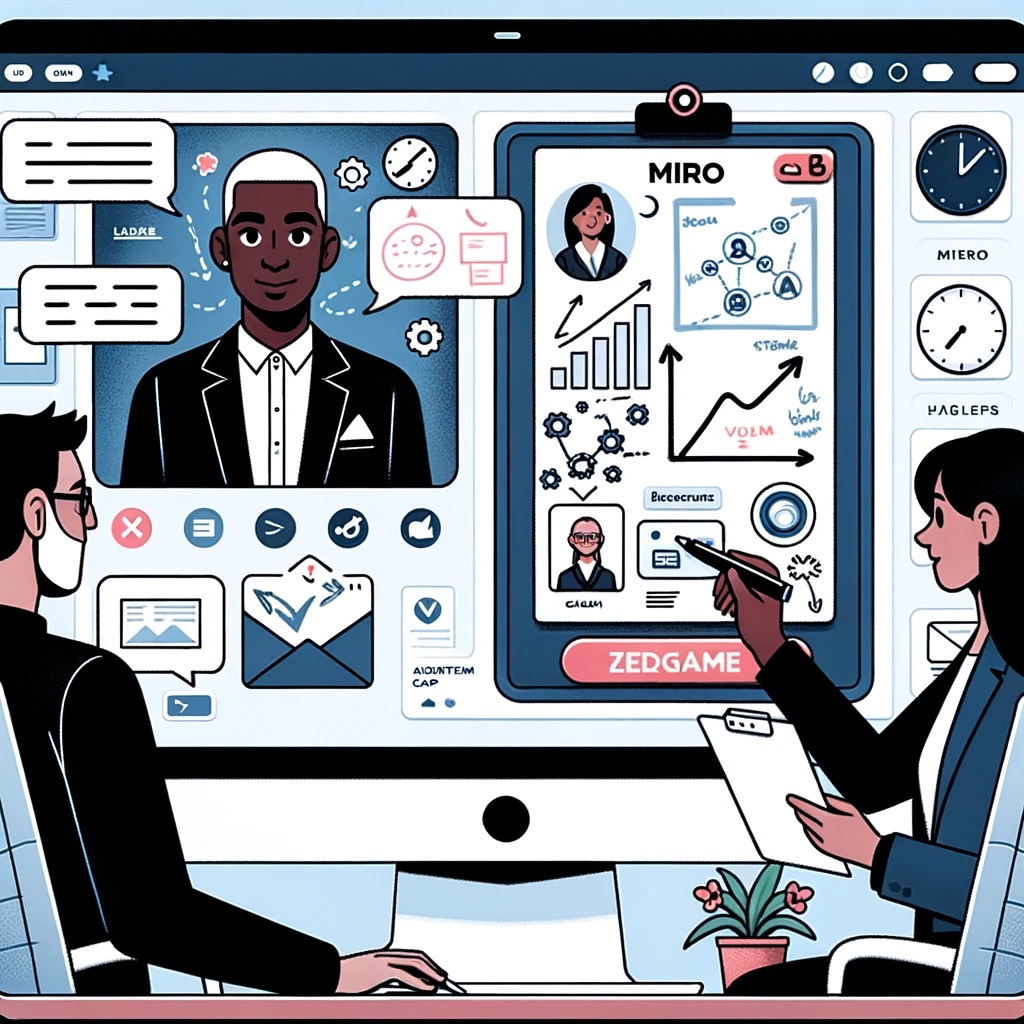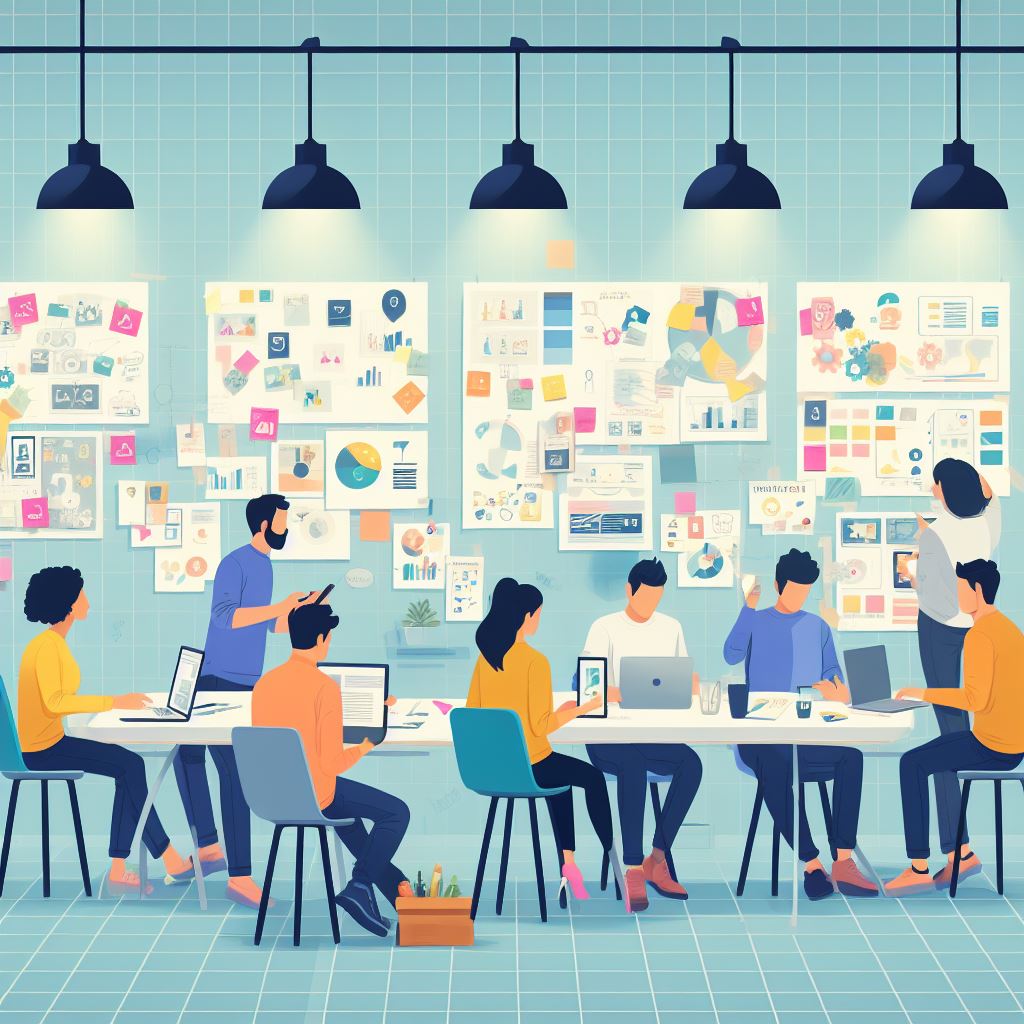Learn about innovation workspaces
The other day I was attending the Distributed conference from one of my favorite virtual whiteboard tools, Miro. They were starting to describe Miro as an innovation workspace. This is an evolution. I remember when Miro was first called RealtimeBoard. Essentially it was a realtime whiteboard that you could brainstorm on with others digitally. It was a great innovation to be able to see the digital sticky notes, add new ones, move them around into groups, etc. So Miro is evolving from online whiteboards for brainstorming to becoming an innovation workspace powered by AI. I really like the “innovation workspaces” term. Miro really is an innovation workspace for me though I hadn’t used that term to describe it. So, let’s dive deeper into innovation workspaces. What are they and what do you do within them? Miro is a virtual one but they can also be physical.
Just like with an innovation assist from ChatGPT to innovate how you work, or utilizing Miro AI to generate ideas, most innovative work in the workspace can be done with AI help…just like how this article was developed and iterated on.
The Innovation Workspace
In the pulsating heart of progressive industries and academic fields, a significant trend has taken root, growing vigorously within the fertile ground of creativity: the ‘Innovation Workspace.’ This concept, transcending the traditional confines of ‘office space,’ has emerged as a vital entity in fostering collaboration, experimentation, and breakthroughs. Unlike merely “innovative” workspaces, which denote spaces designed with cutting-edge or unique elements, innovation workspaces are sanctuaries specifically crafted to nurture the development and intersection of ideas, solutions, and products.
Understanding Innovation Workspaces
Innovation workspaces are dynamic environments, either physical or virtual, that are strategically designed to facilitate the seamless interaction between thinkers, makers, and even machines. These environments are equipped with tools, technologies, and modalities fostering collaboration, thereby catalyzing the birth and maturation of innovation.
Physical Innovation Workspaces
In the physical realm, these spaces might resemble advanced laboratories, workshops, or open studios, often characterized by their adaptability. They are modular venues where furniture and technological equipment can be reconfigured to suit the task at hand – from brainstorming sessions requiring immersive tech to prototyping areas needing 3D printers and material workbenches.
Key components often include:
- Collaborative Zones: Areas dedicated to teamwork, furnished with movable seating, writable walls, and digital screens to facilitate interactive discussions.
- Solo Pods: Private nooks for deep, uninterrupted thinking, essential for the balance between collaboration and individual creative processes.
- Tech-Integrated Spaces: Access to advanced hardware and software, ensuring that ideas aren’t hampered by technological limitations.
- Showcase Areas: Dedicated sections for displaying prototypes, models, and ongoing projects, encouraging feedback, and iterative development.

Virtual Innovation Workspaces
Digitally, innovation workspaces manifest as comprehensive platforms or apps, such as Miro boards, offering a converging point for geographically dispersed teams to collaborate in real-time. These virtual environments replicate physical interaction through shared digital ‘whiteboards,’ project management tools, and synchronous video communications, among others. Essential aspects include:
- Digital Collaboration Tools: Software for real-time editing, brainstorming, and task management, allowing immediate feedback and cooperative creation. (This is like Miro and many other virtual whiteboard tools.)
- Communication Modules: Features enabling clear and instant communication, such as chat tools, video conferencing, and seamless file-sharing capabilities.
- Security Measures: Robust cybersecurity protocols ensuring intellectual property protection and secure sharing of confidential or sensitive developmental work.
- Integration Capacity: Ability to incorporate third-party apps and tools, broadening the scope of resources and functionalities of the workspace.
There are many great tools that can even allow you to engage with AI assistants, co-pilots or “side kicks.”. A Miro Intelligent Canvas allows you to have an innovation workspace with Miro AI assistance.
The Significance of Innovation Workspaces
Fostering Cross-Pollination of Ideas: These spaces gather diverse professionals, often from intersecting fields, facilitating a multidisciplinary approach to problem-solving and ideation. The environment promotes an exchange of perspectives, leading to holistic solution-building and continuous innovation.
Enhancing Engagement and Productivity: Through intentionally designed spaces and state-of-the-art tools, participants engage at a higher level. These settings reduce traditional work monotony, invoking a sense of community and shared purpose, thereby boosting morale and productivity.
Accelerating Development and Iteration: With immediate access to various resources and rapid feedback loops, ideas evolve and mature at an accelerated pace. This dynamism is crucial for staying ahead in today’s fast-paced market landscapes, where the speed of innovation can dictate an organization’s competitiveness.
Cultivating a Culture of Innovation: Beyond the tangible aspects, these workspaces instill a mindset of continuous growth, learning, and adaptability. They create a micro-ecosystem where risk-taking in pursuit of innovation is encouraged, and ‘failure’ is redefined as a stepping stone towards success.
Innovation Workspace Conclusion
Innovation workspaces are more than mere locations; they are carefully orchestrated environments that invoke inspiration and drive for teams and individuals. They stand as a testament to the understanding that groundbreaking ideas are not nurtured in isolation but grown through collaborative efforts, facilitated by spaces that welcome creativity, encourage risk-taking, and harness the collective intellectual power. In a world propelled by relentless technological advancement and market competition, harnessing the full potential of innovation workspaces is not just beneficial; it’s imperative.
Check out some of our earlier posts on innovation centers and design thinking labs to dive deeper on this topic.
